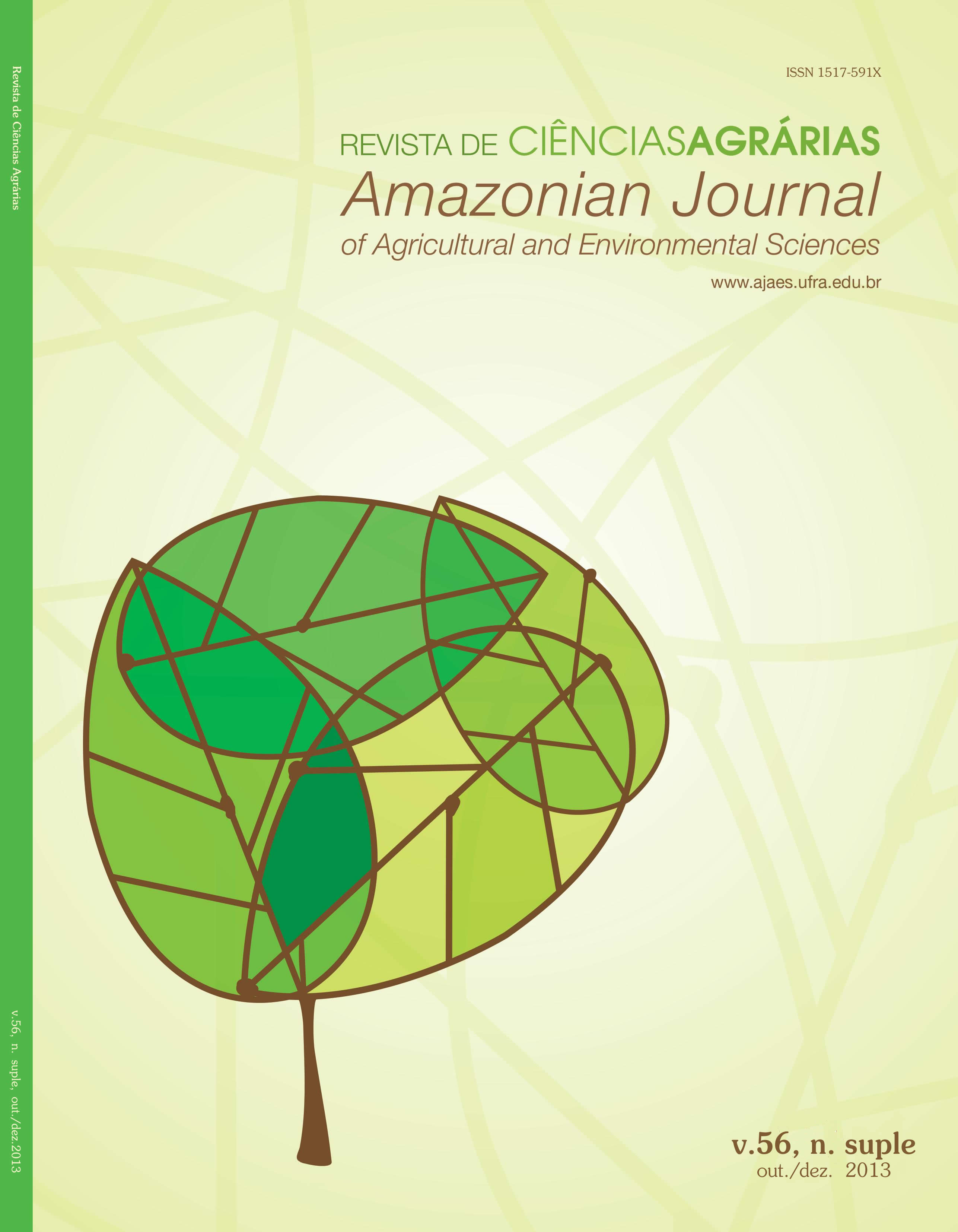Use of refrigeration in the conservation of black raspberries Rubus niveus
Resumo
Raspberries have limited durability after harvest due to their high respiratory rate. The use of low temperatures is one of the techniques used to extend this short period. While cooling is a low-cost method, knowledge of appropriate storage conditions is essential to ensure the quality of the raspberries. To add to this knowledge base, was evaluated black raspberries, Rubus niveus, packed in polyethylene terephthalate trays and stored for 12 days in BOD incubators (biochemical oxygen demand) at –1, 1; 3, 5 and 7 °C, with variations from 0.2 to 0.5 °C, and a relative humidity of 91.4±7.3%. Although the evaluations were extended until the 12th day of storage, the fruits showed different retention periods depending on the temperature. The best temperature for the conservation of fruits was –1 °C, at which the berries reached 12 days of storage without much variation in quality for consumption. On the other hand, when stored at temperatures of 1 and 3 °C, preservation of the berries lasted only three days. After this period, the organoleptic quality of the fruits was reduced due to high mass loss and the development of an unusual taste. These features were anticipated at 5 and 7 °C, and the presence of strange odours and microorganisms were found at 7 °C, all of which resulted in a short period of storage.
Downloads
Referências
ANTONIOLLI, L.R.; SILVA, G.A.; ALVES, S.A.; MORO, L. Alternative controlo f raspberry postharvest decay. Pesquisa Agropecuária Brasileira, v.46, n.9, p.979-984, 2010.
ANTUNES, L.E.C.; DUARTE FILHO, J.; SOUZA, C.M. Postharvest conservation of blackberry fruits. Pesquisa Agropecuária Brasileira, v.38, n.3, p.413-419, 2003.
ASSOCIATION OF OFFICIAL ANALYTICAL CHEMISTS. Official methods of analysis of AOAC International. 18th ed., 2. 2005.
BEEKWILDER, J.; JONKER, H.; MEESTERS, P.; HALL, R.D.; VAN DER MEER, I.M.; DE VOS, C.H.R. Antioxidants in raspberry: on-line analysis links antioxidant activity to a diversity of individual metabolites. Journal of Agricultural and Food Chemistry, v.53, p.3313-3320, 2005.
CALLESEN, O.; MØLLER, H.B. Storage results with red raspberries. Acta Horticulturae, v.262, p.247-254, 1989.
CAMPAGNOLO, M.A.; PIO, R. Produção da amoreira-preta ‘Tupy’ sob diferentes épocas de poda. Ciência Rural, v.42, n.2, p.225-231, 2012.
CHITARRA, M. I. F.; CHITARRA, A. B. Pós-colheita de frutos e hortaliças: fisiologia e manuseio. 2. ed. rev. ampl. Lavras: UFLA, 2005. 785p.
FERREIRA, D.F. Sisvar: a computer statistical analysis system. Ciência e Agrotecnologia, v.35, n.6, p.1039-1042, 2011.
HAFFNER, K.; ROSENFELD, H.J.; SKREDE, G.; WANG, L. Quality of raspberry Rubus idaeus L. cultivars after storage in controlled and normal atmosphere. Postharvest Biology and Technology, v.24, p.279–289, 2002.
KALT, W.; FORNEY, C.F.; MARTIN, A.; PRIOR, R.L. Antioxidant capacity, vitamin C, phenolics, and anthocyanins after fresh storage of small fruits. Journal of Agricultural and Food Chemistry, v.47, p.4638-4644, 1999.
KAYS, J.S. Postharvest physiology of perishables plant products. New York: AVI Book, 1991. 543p.
KRÜGER, E.; DIETRICH, H.; SCHÖPPLEIN, E.; RASIM, S.; KÜRBEL, P. Cultivar, storage conditions and ripening effects on physical and chemical qualities of red raspberry fruit. Postharvest Biology and Technolology, v.60, p.31-37, 2011.
NUNES, M.C.N.; EMOND, J.P.; BRECHT, J.K. Predicting shelf life and quality of raspberries under different storage temperatures. Acta Horticulturae, v.1/2, p.599-606, 2003.
SPIERS, J.M.; MARSHALL, D.A.; SMITH, B.J.; BRASWELL, J.H. Method to determine chilling requirement in Blueberries. Acta Horticulturae, v.715, p.105-110, 2004.
PALIYATH, G.; MURR, D.P. Common fruits, vegetables, flowers and their quality characteristics. In: PALIYATH, G. (Ed.). Postharvest biology and technology of fruits, vegetables, and flowers. New York: Wiley-Blackwell, p.8-18, 2008.
WANG, S.Y.; LIN, H.S. Antioxidant activity in fruits and leaves of blackberry, raspberry, and strawberry varies with cultivar and developmental stage. Journal of Agricultural Food Chemistry, v.48, p.140-146, 2000.
Os autores mantêm os direitos autorais e concedem à revista o direito de primeira publicação. Os autores têm permissão e são estimulados a publicar e distribuir seu trabalho em repositório institucional ou como capítulo de livro, desde que citem a Revista. Como o acesso aos artigos da Revista é gratuito, estes não poderão ser utilizados para fins comerciais. Os conteúdos publicados são de inteira e exclusiva responsabilidade de seus autores. No entanto, os editores poderão proceder a ajustes textuais, de adequação às normas da Revista e à ajustes ortográfico e gramatical, visando manter o padrão culto da língua e do periódico. A não observância deste compromisso submeterá o infrator a sanções e penas previstas na Lei de Proteção de Direitos Autorias (Nº 9.610, de 19 de fevereiro de 1998).


.jpg)









